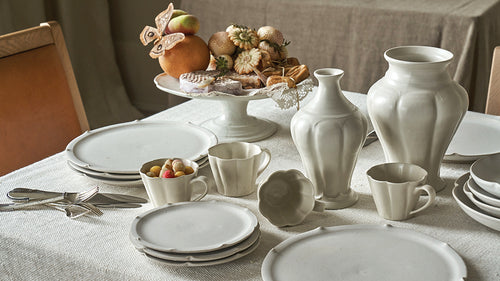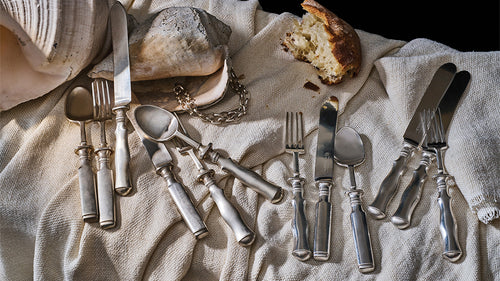THE EYE - - 9:46 AM
The Freedom of the Woodcarver
The idleness of the countryside sets the mind drifting. In the quiet of the unconscious, thoughts and forms commingle, joining together in strange new ways. At Roman and Williams, we seek to design from this free place of mind.
One of our favorite pieces that we’ve done is the Teneresque Credenza, pictured above. To make this piece, our RW cofounder Stephen Alesch began by carefully sketching a “Chambeyronia macrocarpa” which is sometimes also called the flamethrower palm because of the bold red coloring with which its new leaves emerge.
Palms are terrific travelers; this sketch, and a large slab of walnut was sent to the most highly skilled carver we know – a fellow in Croatia named Vedran Jakšić. Making difficult and particular designs is so often about the choice of partnership between craftspeople. About this man, Stephen says,
“Vedran has the ability to animate wood in a lively, energetic way that we are mad for. Carving skill is not always in small details or acrobatic complexity, but in the ability to animate wood. This can be done simply, and without fuss, but only when there is massive skill in the hand of the carver.”
The panels were shipped back, and then the final piece was assembled in upstate New York, carefully following our drawings and prototype.
The cumulative composition of the Teneresque is not just a credenza – it's a united tumult of vision, craft, and materials; a formation possible only in the free-flowing currents of our present world.
We also carry Vedran’s own works at the Guild. These sculptures, some of which are nominally chairs, are surreal and strange; powerful in that they come from a place we recognize, but would be hard-pressed to describe from where.
Many sculptors talk about their work as though they are searching for a truth in the material, revealing something that is already there, and developing a relationship with this essence. The great Romanian sculptor Constantin Brâncuși, from whom we take inspiration, sought to “differentiate the essential from the ephemeral.” Brâncuși's revolutionary sculpting style was expressed through direct carving, in which he worked directly with the material as opposed to the more common practice of making a model to be cast or executed by others. As seen in the photo below of his studio, Brâncuși let the materials speak for themselves in how they shaped and formed.
Wood, a substance of life, is also often treated with a religious veneration. George Nakashima, who worked carefully to reveal the materials innate wildness, once said, "I'm essentially a druid. I believe that there are ghosts in trees, and in a very deep sense the tree is more God-like than man..."
Artists like Brâncuși and Nakashima make up woodcarvings greats, but one of the delights of the genre is its democratic nature. Even if mastery of the craft is difficult, the substance of woodworking is abundant, and has been used widely throughout human history, in happy and dignified service throughout the home.
Woodcarving is both a high art, and a craft.
At the Guild we love the charge created in the tension between disparate objects, and one of our favorite auras to incorporate into the composition of a room is that of a well-used antique.
All of these elements, both cultural and material, are in continual collision, and the living tradition of design is perpetually on the move. Throughout all of this, wood remains ready, for hatchet and hammer to drive forward into new dreams.
-by Sam Dwyer
Further reading:
• A General Theory of Magic, by Marcel Mauss
• Thought-Forms: A Record of Clairvoyant Investigation, by A. Besant and C. W. Leadbetter
• Constantin Brancusi Collection Online, at the Guggenheim















